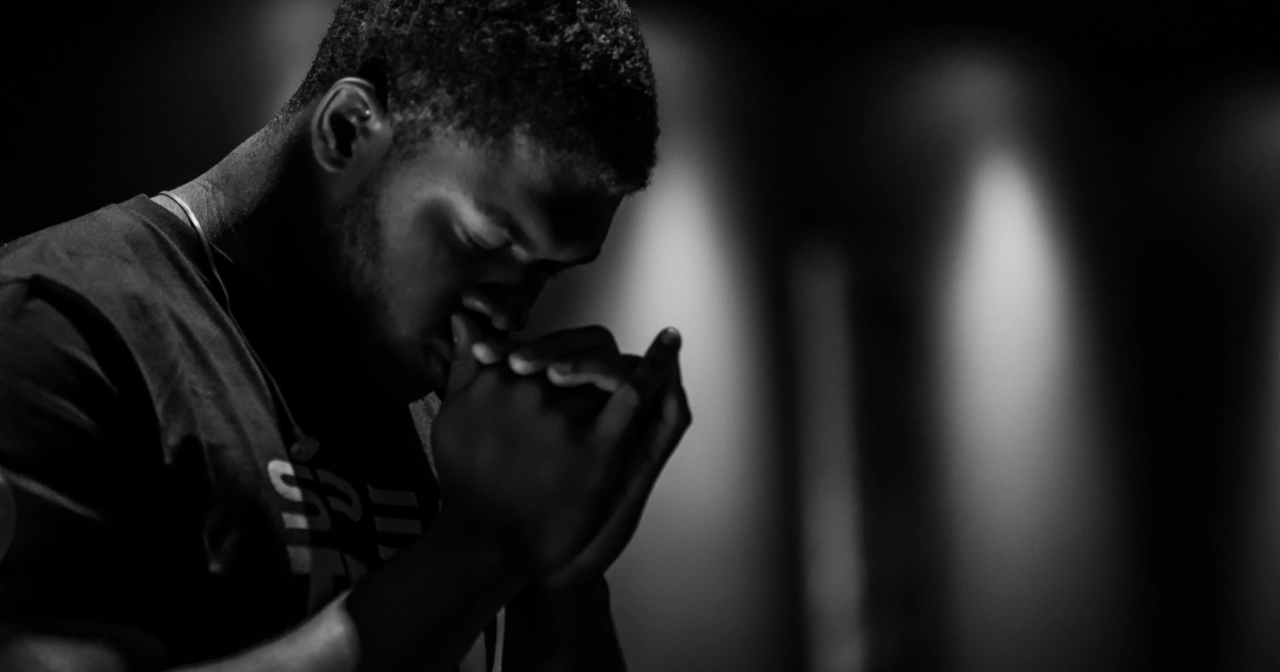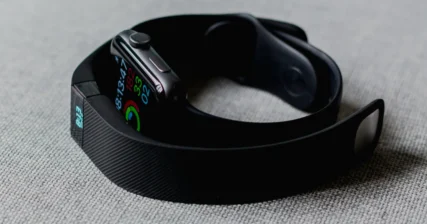Listen on: Apple Podcasts | Spotify
Like last week’s essay, the following comes from a draft of a book I’m working on. In the event it doesn’t make it into the final copy, I thought I’d share my ramblings on my blog. I hope this one reminds you of your power to change yourself for the better.
A Long Walk Home
One afternoon during the spring of 2008, I decided to head outside and do some sprint intervals. I’d sprint for about 100 yards, walk for a block or two, sprint 100 yards, and so on.
I was out for about 45 minutes and was about two blocks from home. The sun was shining, the Rocky IV Training Montage started playing on my iPod, and I thought, “One last all-out sprint.”
Instead of rolling into a sprint by simply speeding up from my walk, like I had the rest of my workout, I stopped and planted my foot flat on the ground. I was determined to make this my best sprint yet. I launched myself from my starting position with my foot still flat on the ground for maximum power.
Think about my stupidity for a moment here. If you crouch down into a starting position for a sprint, with your knees bent and your back foot flat on the ground, and then extend your knees and hips forward as fast as possible, what happens?
Try it in slow motion on your floor. Really slow. You’ll get a great calf stretch when you do it slowly.
When you do it as fast and hard as possible, your calf can only stretch so much before your Achilles tendon pops right out of your ankle. That’s exactly what happened to me.
I launched myself from the starting position, and as soon as my left leg straightened out, I felt a pop in my ankle. It was one of those moments where time slowed down.
In the short span of time transitioning my weight from my left to my right leg, I thought, “That was a weird feeling. I think I just tore my Achilles. I need to stop my forward momentum with my right leg.” I tried to slow myself with the weight on my right foot, hopping on that leg a few times to do so.
Keeping the weight on my right leg, I looked at my left and saw an indentation above my ankle, where my Achilles tendon had previously been attached.
I sat down on the grass next to the sidewalk and called Vanessa, hoping she could pick me up. Unfortunately, she was at work, and our sons were too young to drive.
I limped the two blocks home and drove to the orthopedic clinic. I had it reattached a couple of days later. This was my first serious rehab. Other than working out two days after surgery, using my three good limbs for my strength training sessions, I didn’t do a lot to enhance the recovery process. I even went to a few standard physical therapy sessions, which were a total waste of money, as I basically did calf stretches for $150 an hour.
I pretty much took the surgeon’s word for how long it would take to recover and what my calf would look and function like once it healed. It’s got a ton of scar tissue and is considerably smaller and weaker than the uninjured one, my right calf.
This became my lesson about taking your rehab and recovery into your own hands rather than relying only on what a surgeon or other healthcare practitioner tells you to do.
Disarmed
Six years later, I was working out at the Chanhassen, Minnesota Life Time, just before going to work at the Life Time corporate office across the campus.
I felt extra strong that morning. My third exercise was deadlifts. On my third set, I got to the top of the movement, standing tall with 405 pounds clenched comfortably in my hands.
In this position, your arms are straight, which puts a good amount of tension on your biceps, especially if you use a mixed grip, which means one palm faces forward and the other faces backward. With such a grip, the bar doesn’t slip or roll out of your hands.
Most people know their bicep crosses their elbow. That’s how it lifts your hand toward your mouth. But part of it also crosses your shoulder.
So, I was standing tall, with my left palm facing forward and my right facing back. For whatever reason, I pulled my shoulders back just a little further, adding even more tension to my left biceps.
As soon as I pulled my shoulder back, I felt my biceps tendon pop out of my forearm. I let go of the bar, and the weights crashed to the floor. Then, I sat down on my knees, not in pain but disbelief.
I called Vanessa to let her know what happened and then Twin Cities Orthopedic to see if I could get in to see a doctor. They didn’t open until 9:00, so I showered using my one good arm and went to work for an hour before calling TCO again. I got an appointment scheduled for later that day, went back to work, and then went to the appointment. I was in for surgery two days later. I asked the surgeon:
- How long will it take to recover? At least a year.
- How long before I can do a pull-up? At least six months.
- How long before I can deadlift 400+ again? At least a year.
- How much of my strength will I get back? Maybe 80%.
I wasn’t satisfied with any of those answers. Having learned from my Achilles injury that I needed to own my recovery, I was determined to do just that.
I asked the surgeon what I could do to speed up the recovery. He said, “Nothing, it’ll just take time. There aren’t any supplements or therapies proven to work.”
“One thing, though, I need you to take a high-dose NSAID and a pain killer for the next two weeks. Any extra inflammation after the surgery can cause your ulna and radius (the two bones in your forearm) to fuse together. If that happens, you won’t be able to rotate your forearm.” That was a scary thought.
I saw him again two weeks after the surgery. He cut my cast off and looked at my arm, and said “I can’t believe how little inflammation you have! I’m glad you’ve been taking the NSAIDs and painkillers!”
I didn’t bother to tell him I didn’t take a single one. Nor did I tell him that I’d instead taken high doses of curcumin phytosome, fish oil, creatine, and other supplements, while also applying a ton of essential oils to my right arm and left above and below the cast. Nor did I mention that Id been going to cryotherapy or that I was back in the gym lifting weights two days after surgery. He wasn’t interested.
I never saw the surgeon after that, not that he would have been interested in all the other stuff I did to enhance my recovery. I did my first pull-up seven weeks after surgery, 12 pull-ups at week 12, and deadlifted 405 lbs for three reps a week shy of 6 months post-op.
Why am I telling you all of this? For two reasons:
- I want to get you to understand that the human body can do far more than most people give it credit for. Your body is capable of far more than you give it credit for.
- To show you that my recovery from the broken neck and spinal cord injury wasn’t a fluke and that I knew from the day after surgery that I could beat the best estimate of a recovery timeline any doctor could suggest. And if I can, you can, too.
Read more: Torn Bicep Tendon? How To Speed Up Recovery After Surgery
Of God and Man
As Vanessa continued to share updates and milestones during my rehab and recovery, people often left comments like “What a miracle!” or “Praise God,” or “What a miraculous recovery.” As time went on, and I continued to see such comments, I started feeling a little uneasy.
It’s not that I didn’t want to give God credit. I’m grateful for all He has given my family and me. I believe He saved me from a more severe outcome during my crash. It would have undoubtedly cut my spinal cord if my head had turned just a little as I landed on it. That didn’t happen, and to me, that is a miracle and something for which God deserves all the credit.
But then, the day after surgery, as I lay in bed, I started to move my legs. Then I asked to stand and then walk. And from that moment on, I became determined to do whatever work was necessary to regain my strength and physical function.
From that point on, I don’t see my recovery as miraculous. The way I see it is this: God kept me from permanent paralysis but allowed me to sustain a significant injury. Then He left it to me to use that injury as an excuse to become a bystander in life, or to do the work necessary to regain my physical strength and function as quickly as possible.
It was on me to do the work. That means that if someone else finds themself in the same situation, they don’t need a miracle; they need to do the work. They need to use whatever physical and mental abilities they have at that point and do the work to improve upon them.
What I did was something anyone else in the same situation could do. Granted, there are differences in spinal cord injuries. Someone who did sever their spinal cord could have a much longer road to recovery. Someone else who “only” broke their neck but didn’t damage their spinal cord could recover much faster than me.
Recovery doesn’t depend on a miracle from God. It depends on doing the work with whatever God has given you to work with.
I’ve worked with a lot of people over the years who spoke of waiting for God to change them, to make their lives better, to help them get healthier and fitter.
But if God has given you two arms and two legs that work, you don’t have to wait. You have to work.
Heck, if He’s given you two arms and a leg, or two legs and an arm, or just two arms, or just two legs, you can take what you have and make yourself stronger, healthier, and fitter.
An injury is an excuse to stop working, not a reason. An injury ought to be more of a reason to exercise and eat well than when you’re uninjured.
We shouldn’t pray to be healed and avoid what works to heal ourselves. We shouldn’t pray for health and avoid what’s necessary to become healthy.
Thank God for what you have, and then show Him your gratitude by making the most of what He’s given you.
Maybe the real miracle God’s blessed you with is your ability to do the work necessary to make yourself stronger, healthier, and fitter. Don’t waste the miracle by avoiding the work.
Do the work, and praise God that you can.
Photo by Jack Sharp on Unsplash



